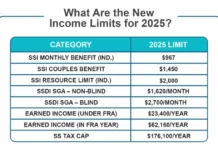A competitive edge is a point of difference that sets your business apart from its competitors. This can be anything from your product’s unique features to your company’s brand image.
Compensation benchmarking is a critical part of developing this competitive advantage. With recent salary transparency policies and salary history bans, it’s more important than ever to have reliable data on salaries for various roles in your organization.
It Gives You the Data You Need to Make Decisions
When your team makes decisions about hiring, salary adjustments, and compensation strategies, a solid understanding of the market rate for any given job helps you make informed choices. Whether you are looking for the best ways to recruit and retain top talent or determine what new incentives might boost commercial lending sales, you need accurate data on what is genuinely competitive.
Benchmark compensation involves comparing jobs at your company with similar positions at other companies to assess the current market rate for each role. This helps you set competitive salaries, which in turn helps attract and retain qualified employees. In a tight labor market, this is more important than ever. Without a clear view of the current market rate, it’s easy to fall behind and risk losing your competitive edge.
A well-run benchmarking process also considers internal equity, ensuring that similar roles are paid relatively. This can be achieved through job matching and leveling, which uses the responsibilities and complexity of each position to create like-for-like comparisons. Considering factors like company size, location, and industry ensures you get the most accurate information for your business.
When you use robust data to make pay decisions, your team members will feel confident that they are being compensated in line with the industry standard. This helps build trust and confidence, essential elements of a healthy culture supporting growth and retention.
It Ensures Your Pay Is in Line with Your Company’s Philosophy
A well-crafted compensation philosophy, backed by robust and accurate benchmarking data, can help your organization remain competitive in the job market while attracting top talent. This, in turn, can lead to higher employee retention rates and sustained growth over time.
The first step in establishing a comp policy is collecting salary data. HR teams can use several sources, including internal salary databases, industry reports, and online compensation tools. Once this data is collected, you can then use it to compare job roles and create appropriate pay grades, ranges, and scales.
Another essential part of this process is identifying competitors. You can determine what companies pay their employees in similar positions and industries to see how your company stacks up. This will help you make informed decisions about compensation budget planning and determine if your compensation packages are attractive enough to attract and retain top talent.
When collecting salary data, it’s also important to consider other compensation methods, such as profit-sharing, flexible work options, and developmental opportunities. Robust benchmarking data should consider all of these when making comparisons, as this can give you a more comprehensive picture of the current compensation landscape in your region. This information can also be helpful when negotiating with candidates during the hiring process.
It Helps You Retain Top Talent
Companies that consistently conduct compensation benchmarking audits are more likely to attract and retain top talent. This helps them reduce employee turnover and keeps morale high. In a tight job market, this is more important than ever. The process of conducting a compensation benchmarking audit typically begins with a clearly defined internal job description for each position within the company. This document is matched to jobs and compensation levels worldwide using data from credible salary surveys, job postings, and recruitment agencies. The result is a set of competitive salary ranges for each role.
These benchmarks are then used to guide salary decisions throughout the organization. They also help evaluate current salaries to determine whether they are competitive and aligned with your existing compensation plan. If they are not, adjustments to the plan may be necessary.
Salary benchmarking also plays a vital role in determining how to structure your compensation packages for new hires and when making internal promotions. When done correctly, this ensures that your employees are paid based on their duties and responsibilities. You can use various benchmarking methods, including the highest responsibility method, to consider which role an individual performs during most workday (for example, a technical writer/web manager).
It Helps You Make Better Decisions About Promotions
A well-run compensation benchmarking process provides an impartial view of pay for your various positions so that you can make strategic decisions about promotions, internal equity salary adjustments, and general compensation budget planning. It also helps you ensure that your company’s roles and salaries are competitive with those in your industry and region.
Having reliable data on market rates and salary trends can help you avoid overpaying or underpaying employees, negatively impacting employee satisfaction and morale and increasing hiring and turnover costs. You can also use this data to improve your job descriptions by making them more accurate and relevant, enabling you to attract suitable candidates.
You can also use compensation benchmarking to identify discrepancies between your salary packages and your competitors and align them with your compensation philosophy, improving employee retention rates and long-term success for your business. In addition, you can use this data to ensure that your salaries comply with any legal demands related to minimum wage or equal pay laws.
Sometimes, salary benchmarking isn’t feasible for a new position because the role doesn’t yet exist in the marketplace, and there is no survey data to provide a basis for comparison. In these cases, it may be necessary to use other methods for determining appropriate compensation, such as evaluating the business impact of the position or analyzing background information on responsibilities and competencies.







